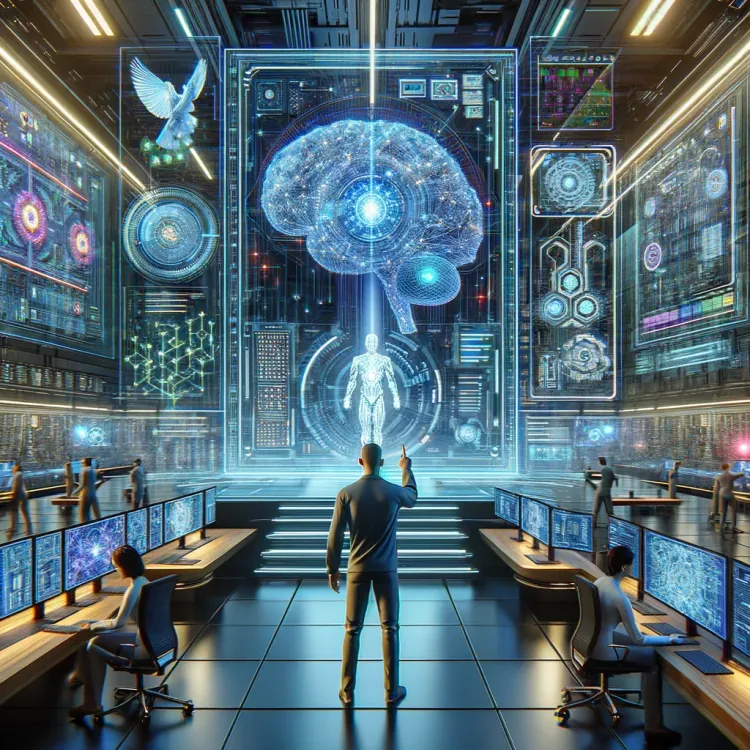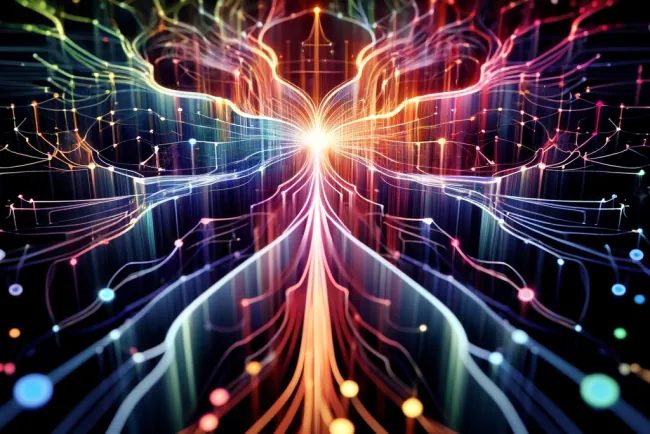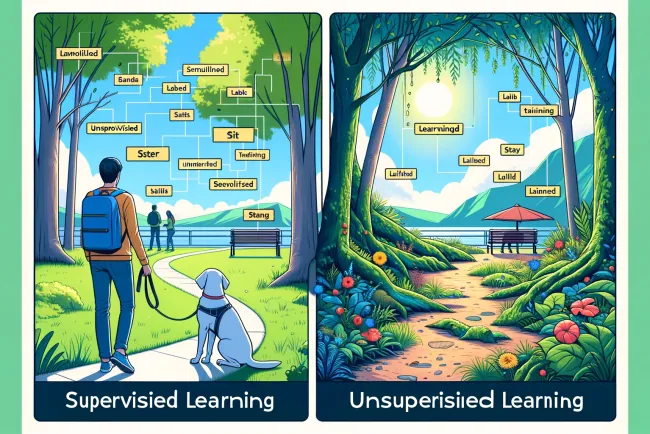Deep Learning vs. Traditional Machine Learning
aspects of deep learning, how it differs from traditional machine learning, and its applications in modern technology

Deep Learning vs. Other Machine Learning Methods
-
Introduction
- Brief overview of machine learning.
- Introduction to deep learning as a subset of machine learning.
-
Understanding Deep Learning
- Definition of deep learning.
- Key concepts: neural networks, layers, and neurons.
-
Core Components of Deep Learning
- Architecture: Feedforward, Convolutional Neural Networks (CNN), Recurrent Neural Networks (RNN), etc.
- Activation functions: ReLU, Sigmoid, Tanh.
- Backpropagation and its importance.
-
Comparison with Other Machine Learning Methods
- Traditional machine learning models (e.g., decision trees, SVM).
- Differences in approach: feature engineering vs. feature learning.
- Scalability and performance with large data sets.
-
Applications of Deep Learning
- Image and speech recognition.
- Natural language processing.
- Autonomous vehicles and other advanced robotics.
-
Advantages of Deep Learning
- Ability to model complex non-linear relationships.
- High accuracy in tasks like image and speech recognition.
- Minimal human intervention needed post-setup.
-
Challenges and Limitations of Deep Learning
- Requirement for large amounts of data.
- High computational cost and resource-intensive.
- Lack of interpretability and transparency.
-
Future Trends in Deep Learning
- Integration with other AI technologies.
- Advances in unsupervised and semi-supervised learning techniques.
- Ethical considerations and biases in training models.
-
Conclusion
- Recap of the key differences and potentials of deep learning.
- The future scope and how it is shaping technology.
-
FAQs
- What is the difference between deep learning and artificial intelligence?
- How does deep learning impact everyday technology?
- What are the career prospects in deep learning?
Article: Understanding Deep Learning and Its Distinction from Traditional Machine Learning
Introduction
Machine learning is a revolutionary field of artificial intelligence that enables computers to learn from and make decisions based on data. Deep learning, a subset of machine learning, has gained prominence due to its profound capabilities in handling and interpreting vast amounts of data. This article explores deep learning, how it operates, and how it differs fundamentally from other machine learning methodologies.
Understanding Deep Learning
Deep learning is an advanced machine learning technique that teaches computers to do what comes naturally to humans: learn by example. It involves the use of neural networks that have three or more layers. These neural networks attempt to simulate human-like decision making by creating connections between many layers of artificial neurons.
Core Components of Deep Learning
At the heart of deep learning are its architectures such as Feedforward Neural Networks, CNNs, and RNNs. These structures help in processing data through layers, each providing a different transformation of the data. Activation functions like ReLU and Sigmoid play critical roles in these networks by deciding whether a neuron should be activated, helping the network learn complex patterns.
Comparison with Other Machine Learning Methods
Unlike traditional machine learning methods, which require manual feature selection and simpler modeling techniques such as decision trees and SVM, deep learning automates feature extraction. This automation allows it to excel in tasks that involve large-scale and complex data, such as image and voice recognition.
Applications of Deep Learning
Deep learning's capability to analyze and learn from big data finds applications in numerous fields. It powers the core of modern conveniences such as digital assistants, real-time traffic predictions, and personalized streaming services. It's also pivotal in transformative technologies, including autonomous driving and advanced patient diagnostics.
Advantages of Deep Learning
Deep learning models can uncover intricate structures in large data sets, thanks to their deep architecture and substantial training processes. They outperform other models in accuracy when it comes to complex problems like predictive analytics and real-time decision-making.
Challenges and Limitations of Deep Learning
Despite its benefits, deep learning requires significant data inputs without which model accuracy can suffer. Its complexity leads to high resource consumption and necessitates powerful hardware, which can be a barrier to entry for some organizations. Additionally, these models often act as "black boxes"—providing little explanatory insight into their decision-making processes.
Future Trends in Deep Learning
The field of deep learning is ever-evolving, with research geared towards making models more efficient, ethical, and capable of unsupervised learning. These advancements are likely to make deep learning more accessible and widely applicable, potentially solving some of the most pressing and challenging issues in AI.
Conclusion
Deep learning differs from traditional machine learning by its ability to process natural data in their raw form and learn layers of representation that make sense of such data. The breadth of its applications and its continuous improvement point to a vibrant future that promises further integration into daily technology and operations.
FAQs
-
What is the difference between deep learning and artificial intelligence? Deep learning is a subset of machine learning, which itself is a subset of artificial intelligence focused on data-driven decision-making.
-
How does deep learning impact everyday technology? Deep learning improves the functionality of everyday applications, such as voice-activated assistants, personalized recommendations, and automated customer service.
-
What are the career prospects in deep learning? Careers in deep learning are numerous and growing, spanning areas like AI research, autonomous systems design, and machine learning engineering.
What's Your Reaction?






















